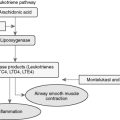CHAPTER 23 Women’s Health Issues
| T-score | |
|---|---|
| Normal | > −1 |
| Osteopenia | −1 to −2.5 |
| Osteoporosis | < −2.5 |
| Active Ingredient | Duration | |
|---|---|---|
| Terconazole (Terazol, Zazole) | 0.4% cream | 7 days |
| 0.8% cream or 80 mg suppository | 3 days | |
| Nystatin | 100,000 unit vaginal tablet | 14 days |
Table 23-3 OTC Medications for Vaginal Candidiasis
| Active Ingredient | Duration | |
|---|---|---|
| Butoconazole (Femstat) | 2% cream | 3 days |
| Clotrimazole (Gyne-Lotrimin, Mycelex, Canesten) | 1% cream or 100-mg tablet | 7 days |
| 2% cream or 200-mg tablet | 3 days | |
| 10% cream or 500-mg tablet | 1 day | |
| Miconazole (Monistat, Vagistat-3, Monistat-1 Ovule Pak) | 2% cream or 100-mg suppository | 7 days |
| 200-mg suppository | 3 days | |
| 1200-mg ovule | 1 day | |
| Tioconazole (Vagistat-1) | 6.5% ointment or 300-mg ovule | 1 day |
TABLE 23-4 Monophasic Oral Contraceptives
| Generic Components and Doses | Product Names |
|---|---|
| Desogen | |
| Ortho-Cept | |
| Reclipsen | |
| Solia | |
| Apri | |
| Yasmin | |
| Demulen 1/35 | |
| Zovia 1/35 | |
| Kelnor 1/35 | |
| Demulen 1/50 | |
| Zovia 1/50 | |
| Levlite | |
| Alesse | |
| Aviane | |
| Lutera | |
| Lessina | |
| Levlen | |
| Nordette | |
| Levora | |
| Portia | |
| Ovcon-35 | |
| Balziva | |
| Modicon | |
| Brevicon | |
| Necon 0.5/35 | |
| Nortrel 0.5/35 | |
| Ovcon-50 | |
| Loestrin 1-20 | |
| Microgestin 1-20 | |
| Junel 1/20 | |
| Ortho-Novum 1-50 | |
| Norinyl 1-50 | |
| Necon 1-50 | |
| Lo-Ovral | |
| Low-Ogestrel | |
| Cryselle | |
| Ovral | |
| Ogestrel | |
| Ortho-Cyclen | |
| Sprintec | |
| Mononessa | |
| Previfem | |
| Loestrin FE 1-20 | |
| Microgestin FE 1-20 | |
| Junel FE 1-20 | |
| Loestrin FE 1.5-30 | |
| Microgestin FE 1.5-30 | |
| Junel FE 1.5-30 |
Note: Bold indicates originator product brand names; italics indicate generic name.
TABLE 23-5 Biphasic Oral Contraceptives
| Generic Components and Doses | Product Names |
|---|---|
| Mircette | |
| Kariva | |
| Ortho Novum 10–11 | |
| Necon 10–11 |
Note: Bold indicates originator product brand names; italics indicate generic name.
TABLE 23-6 Triphasic Oral Contraceptives
| Generic Components and Doses | Product Names |
|---|---|
| Cyclessa | |
| Velivet | |
| Vesia | |
| Triphasil | |
| Tri-levlen | |
| Enpresse | |
| Trivora | |
| Ortho Novum 7-7-7 | |
| Necon 7/7/7 | |
| Nortrel 7/7/7 | |
| Tri-Norinyl | |
| Leena | |
| Aranelle | |
| Ortho Tri-Cyclen | |
| Tri-sprintec | |
| Trinessa | |
| Tri-previfem | |
| Ortho Tri-Cyclen Lo | |
| Estrostep/ Estrostep FE |
Note: Bold indicates originator product brand names; italics indicate generic name.
TABLE 23-7 Extended Cycle Oral Contraceptives
| Generic Components and Doses | Product Names |
|---|---|
| Ethinyl estradiol 20 mcg and drospirenone 3 mg | Yaz 24/4 |
| Ethinyl estradiol 20 mcg and norethindrone acetate 1mg + ferrous fumarate 75mg | |
| Ethinyl estradiol 30 mcg and levonorgestrel 0.15 mg | Seasonique |
Note: Bold indicates originator product brand names; italics indicate generic name.
TABLE 23-8 Progestin Only Oral Contraceptives
| Generic Components and Doses | Product Names |
|---|---|
| Norethindrone 0.35 mg | Ortho-Micronor |
| Nor-QD | |
| Camila | |
| Errin | |
| Jolivette |
Note: Bold indicates brand name; italics indicates generic brand name.
TABLE 23-9 Emergency Contraceptive
| Generic Component and Dose | Product Name |
|---|---|
| Levonorgestrel 0.75 mg | Plan B |
Note: Bold indicates brand name.
PATIENT PROFILE
PATIENT PROFILE QUESTIONS
REVIEW QUESTIONS
(Answers and Rationales on page 379.)




